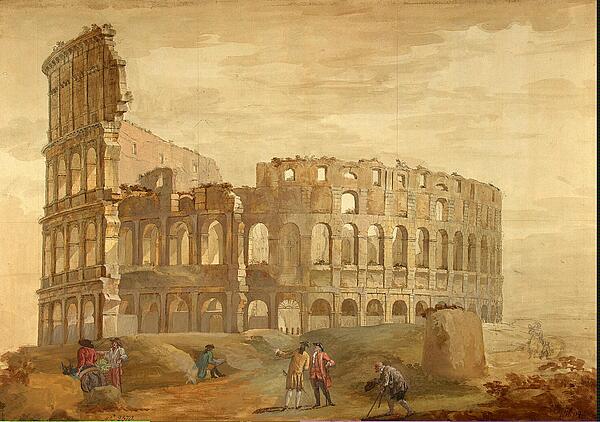The Fall of The Roman Empire
The fall of the Roman Empire was the culmination of a number of problems. The empire became too large and unwieldy to govern properly - a problem Constantine the Great tried to solve in 330AD by dividing the western (centred on Rome) and eastern (centred on Constantinople) parts of Ancient Rome into separate regions. Roman men no longer wanted to serve in the army because of the poor pay and the long periods they were forced to be apart from their families. The government decided to use barbarian soldiers to fight for Rome instead. The allegiance of these soldiers was, more often than not, to their commanders rather than Rome or the prevailing Emperor.
Other difficulties included civil wars breaking out, the rich becoming uninterested in helping Rome and only wanting more for themselves and their families, rampant corruption, the population shrinking, trade decreasing, taxes and prices increasing with the poor being overtaxed, slaves putting people out of work and roads falling into disrepair.
In time when Rome was ruled by a good emperor, attempts were made to fix these problems but a high turnover of rulers meant that inevitably a bad emperor would soon follow and the remedies were not carried through. Eventually the problems in the western Roman Empire grew so large that it was taken by barbarian tribes.

Ancient Rome’s fall began from around AD 180 - the empire was attacked by tribes like the Goths and Vandals, who wanted to move south towards southern areas of Europe for a better climate to assist their farming. Naturally this caused conflict between themselves and the Romans.
The Roman army also argued over who should be emperor - when an area succeeded in putting forward one of their own men, another area would oppose them to have one of their men instead. Between AD 211 and 284 there were 23 ‘soldier-emperors’, 20 of whom were killed by their rivals.
So in AD 284 the emperor Diocletian made a decision to divide the Roman Empire in half to stop it from disintegrating - this led to the eastern and western Empire with their own leaders. More military defences also had to be built across the whole empire which would cost extra money that Rome did not have. So to pay for these, taxes were increased and extra coins minted which led to an increase in prices.
Constantine became emperor in AD 307 until AD 337 - he was considered a strong ruler and was also the first Christian emperor. Constantine felt that Rome was too far away from necessary areas of the empire to be much value from a government’s opinion. So he moved the empire’s capital to a new city named Constantinople, which was built on the old city of Byzantium.
Constantine had not made a good decision by doing this as his new city was much further east than Rome in the eastern empire. So the western empire was left vulnerable, and was attacked via the eastern empire through different tribes.
The Romans had no choice but to make deals with the tribes - they were allowed to live in the empire as long as they promised to protect it from the Huns. But in AD 398 the Visigoths tribe leader, Alaric, realised he could capture Rome quite easily and in AD 410 he succeeded. The other territory owned by Rome across Europe was also attacked by various tribes.
Rome was attacked again in AD 455 by the Vandals and suffered a lot of damage. Historians state that the Roman empire officially ended in AD 476 when the last emperor (Romulus Augustus) was removed from power by the leader of the Goths (Odovacar). However, the Roman rule continued in the eastern empire for another 1,000 years throughout Greece, Turkey, the Middle East and northern Egypt.
See also: The Roman Empire
Further reading: The Decline and Fall of the Roman Empire Edward Gibbon, 1994.
MLA Citation/Reference
"The Fall of The Roman Empire". HistoryLearning.com. 2026. Web.
